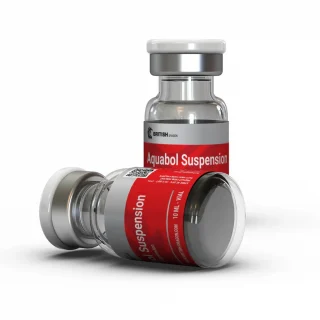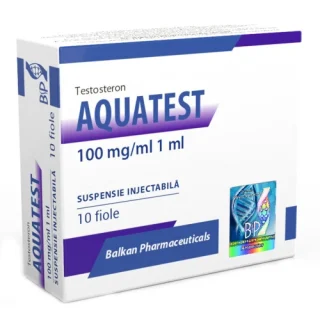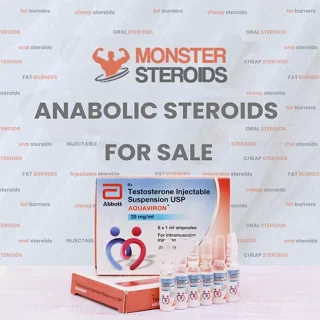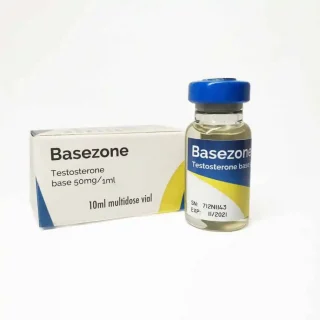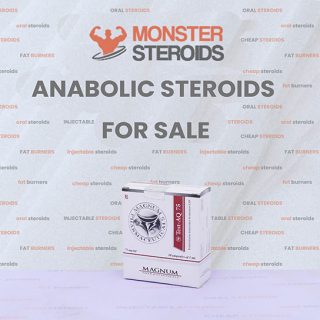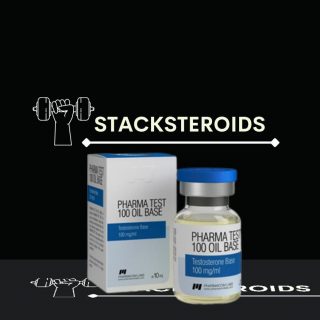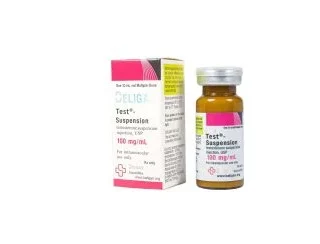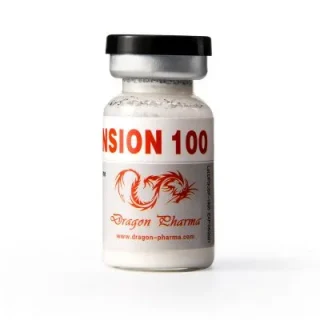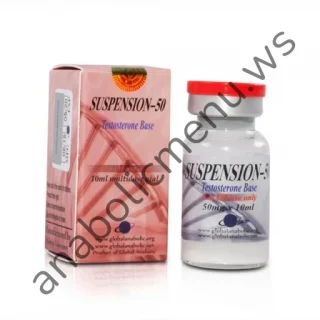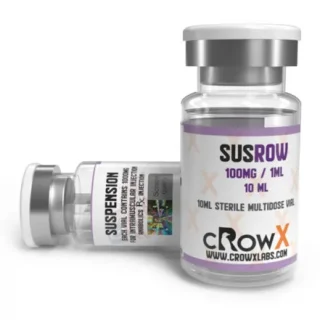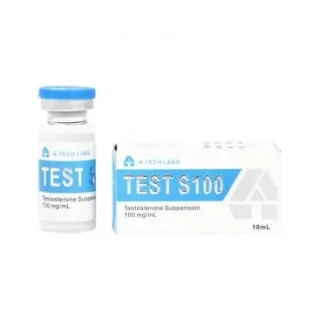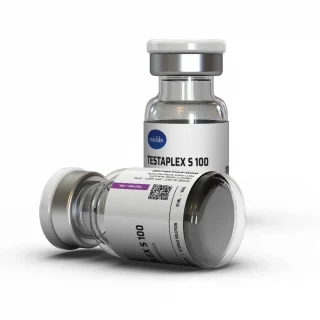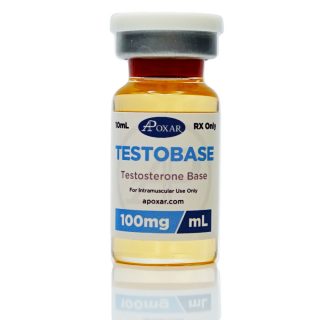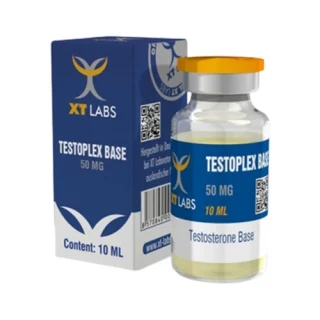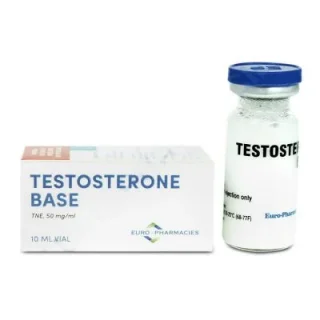Medical indications for the use of testosterone
Pharmacodynamics
A major androgen. Physiological effects are due to the combined action of testosterone itself and its metabolites with androgenic (dihydrotestosterone) and estrogenic (estradiol) activity. In target organs (prostate, seminal vesicles, skin and others) it is reduced by 5a-reductase to 5a-dihydrotestosterone, which specifically interacts with androgen receptors on the cell surface and penetrates into the nucleus. It is converted to estradiol in some tissues (including the hypothalamus).
The main effects of testosterone are: androgenic (growth and development of genitals, stimulation of their activity, manifestation of secondary sexual characteristics, providing erectile function), anabolic (maintenance of muscle mass and regulation of adipose tissue mass, stimulation of organ-specific protein synthesis in kidneys, liver, sebaceous and sweat glands; maintenance of bone tissue density), antigonadotropic (suppression of gonadotropin secretion), reproductive (maintenance of spermatogenesis), psychophysiological (maintenance of libido, formation of stereotypical sexual behaviour, mood, psychostimulant effect), haemopoietic (stimulation of erythropoietin production in kidneys, erythropoiesis in red bone marrow).
In men with hypogonadism androgen therapy leads to a clinically significant increase in plasma concentration of testosterone, dihydrotestosterone, androstenedione, a decrease in the content of globulin binding sex hormones (HSPG), luteinising and follicle-stimulating hormone, and in men with primary (hypergonadotropic) hypogonadism normalises the concentration of gonadotropin. Sexual function improves, libido increases, fat tissue mass decreases, non-fat body mass increases, bone mineral density increases, psychophysiological state improves.
Pharmacokinetics
Absorption of testosterone from mucous membranes and skin is high and depends on the dosage form. It is administered as testosterone undecanoate (orally, intramuscularly) and active testosterone (topically).
About 98% of circulating testosterone binds to hsps and albumin. Only the free fraction of testosterone is considered biologically active. Biotransformation to inactive metabolites occurs in the liver. After administration of labelled testosterone, about 90% of the radioactivity is detected in the urine as glucuronide and sulphate acid conjugates. Products detectable in urine include androsterone and ethiocholanolone. 6% of the active ingredient is detectable in the faeces after passing through the intestinal-hepatic circulation.
Testosterone formed from testosterone undecanoate by cleavage of the ester bond is metabolised and excreted by the same pathways as endogenous testosterone. Undecanoic acid is metabolised by β-oxidation in the same way as other aliphatic carboxylic acids.
Peculiarities of pharmacokinetics by different routes of administration
After ingestion, a significant portion of testosterone (in the form of undecanoate ester) is absorbed in the small intestine and enters the lymphatic system, thus partially bypassing the primary passage through the liver. From the lymphatic system, testosterone undecanoate enters the plasma. In the plasma and tissues, the natural male sex hormones testosterone and dihydrotestosterone are released as a result of hydrolysis.
A single administration of 80-160 mg of testosterone undecanoate results in a clinically significant increase in the total plasma concentration of testosterone, the maximum concentration is approximately 40 nmol/L and is reached 4-5 h after administration. The increased testosterone concentration persists for at least 8 h. The elimination half-life is from 10 to 100 min.
After intramuscular administration of testosterone undecanoate is gradually released from the depo-form (oil solution) and almost completely broken down by serum esterases into testosterone and undecanoic acid. An increase in serum testosterone concentration is noted as early as the next day.
According to two studies, in men with hypogonadism after a single intramuscular injection of 1000 mg of testosterone undecanoate, mean values of maximum testosterone concentration of 45 and 24 nmol/l are determined after 7 and 14 days, respectively. Postmaximal testosterone levels decrease with a half-life of approximately 53 days.
After repeated intramuscular injections of 1000 mg testosterone undecanoate to men with hypogonadism with an injection interval of 10 weeks, equilibrium concentrations were reached between the 3rd and 5th injection. The mean values of maximum and minimum testosterone concentrations at equilibrium were about 42 and 17 nmol/L, respectively. Postmaximal testosterone levels in serum decreased with a half-life of approximately 90 days, which corresponds to the rate of release of the substance from the depot.
When applied topically, the absorption rate of testosterone ranges from 9 to 14% of the applied dose. After absorption through the skin, testosterone enters the systemic bloodstream in relatively constant concentrations over a 24-hour cycle. Daily fluctuations in testosterone concentrations have the same amplitude as circadian changes in endogenous testosterone content. External administration of testosterone avoids the distribution peaks in blood that occur with the injectable route of administration. In contrast to oral androgen therapy, external administration of testosterone does not cause an increase in hepatic steroid concentrations above physiological norms.
External application of 50 mg of testosterone causes an average increase in its plasma concentration of approximately 2.5 ng/ml (8.7 nmol/l). After discontinuation of treatment, testosterone concentrations begin to decrease approximately 24 h after the last use. Concentrations return to baseline approximately 72-96 h after the last dose. The major active metabolites of testosterone when applied topically are dihydrotestosterone and estradiol.
Indications
Hormone replacement therapy for disorders associated with testosterone deficiency: post-castration syndrome, eunuchoidism, hypopituitarism, endocrine impotence, some forms of infertility associated with impaired spermatogenesis, menopausal symptoms in men (decreased libido and physical activity, deterioration of general well-being), masculinisation in transsexuals.
Testosterone therapy is indicated in men with osteoporosis caused by androgen deficiency.
Showing 1–16 of 28 results
-
AndroBase 100 Canada Peptides
€65.00Add to cartIntroducing AndroBase 100 by Canada Peptides: Unlock Your True Potential Are you ready to take your bodybuilding journey to the next level? Look no further than AndroBase 100 by Canada Peptides. This cutting-edge product is designed to help you achieve your fitness goals faster and more efficiently than ever before. With its unique blend of …
-
Aquabol Suspension 100 mg British Dragon
€52.00Add to cartAquabol Suspension 100 mg British Dragon Experience the power of Aquabol Suspension 100 mg by British Dragon, the ultimate solution for bodybuilders seeking unparalleled muscle growth and strength gains. With its potent formula and cutting-edge technology, Aquabol Suspension is designed to take your performance to new heights. Whether you are a beginner or an experienced …
-
Aquatest 100 mg Balkan Pharmaceuticals
€75.00Add to cartAquatest 100 mg Balkan Pharmaceuticals: Unleash Your True Potential Are you ready to take your fitness journey to the next level? Look no further than Aquatest 100 mg by Balkan Pharmaceuticals. This powerful anabolic steroid is designed to help you achieve your bodybuilding goals with remarkable efficiency and effectiveness. With its unique formulation and exceptional …
-
Aquaviron 25 mg Abbott Laboratories
€72.60Add to cartAquaviron 25 mg Abbott Laboratories: Unlock Your True Potential Are you ready to take your fitness journey to the next level? Look no further than Aquaviron 25 mg by Abbott Laboratories. This powerful and reliable product is designed to help you achieve your bodybuilding goals with ease. With its unique formulation and exceptional benefits, Aquaviron …
-
Basezone 50 mg AlphaZone Pharmaceuticals
€40.00Add to cartIntroducing Basezone 50 mg by AlphaZone Pharmaceuticals Are you looking to take your bodybuilding journey to the next level? Look no further than Basezone 50 mg by AlphaZone Pharmaceuticals. This cutting-edge product is designed to enhance your performance, boost muscle growth, and help you achieve your fitness goals like never before. Pharmacological Action Basezone 50 …
-
GP Test Suspension 100 Geneza Pharmaceuticals
€36.00Add to cartGP Test Suspension 100 Geneza Pharmaceuticals Are you looking for a powerful and effective testosterone booster to enhance your athletic performance and achieve your bodybuilding goals? Look no further than GP Test Suspension 100 by Geneza Pharmaceuticals. This cutting-edge product is designed to provide you with the ultimate support in your fitness journey, helping you …
-
Magnum Test-AQ 75 Magnum Pharmaceuticals
€55.00Add to cartMagnum Test-AQ 75: Unlock Your True Potential Introducing Magnum Test-AQ 75 by Magnum Pharmaceuticals, the ultimate solution for bodybuilders and fitness enthusiasts looking to take their performance to the next level. With its powerful formula and cutting-edge ingredients, this testosterone booster is designed to optimize muscle growth, enhance strength, and improve overall athletic performance. Get …
-
Pharma Test Oil Base 100 mg Pharmacom Labs
€42.90Add to cartPharma Test Oil Base 100 mg Pharmacom Labs Introducing Pharma Test Oil Base 100 mg by Pharmacom Labs, a cutting-edge product designed to enhance your bodybuilding journey. With its potent formula and exceptional quality, this testosterone-based oil is a game-changer for both beginners and experienced bodybuilders. Let’s dive into the specifics of this remarkable product. …
-
Super Testosterone 100 mg Beligas
€46.00Add to cartSuper Testosterone 100 mg Beligas Introducing Super Testosterone 100 mg Beligas, the ultimate solution for bodybuilders and fitness enthusiasts looking to enhance their performance and achieve their goals. With its powerful formula and exceptional benefits, this product is a game-changer in the world of testosterone boosters. Unleash Your Potential Super Testosterone 100 mg Beligas is …
-
Suspension 100 Dragon Pharma
€37.00Add to cartSuspension 100 Dragon Pharma: The Ultimate Performance Enhancer Are you ready to take your bodybuilding journey to the next level? Look no further than Suspension 100 by Dragon Pharma. This powerful and versatile product is designed to help you achieve your fitness goals faster and more efficiently than ever before. With its unique formulation and …
-
Suspension-50 (Test Base) 50 mg Global Anabolic
€38.00Add to cartSuspension-50 (Test Base) 50 mg Global Anabolic Are you looking to take your bodybuilding journey to the next level? Look no further than Suspension-50 (Test Base) 50 mg by Global Anabolic. This powerful product is designed to help you achieve your fitness goals faster and more efficiently than ever before. With its unique formulation and …
-
SUSROW 100 mg CrowX Labs
€77.00Add to cartSUSROW 100 mg CrowX Labs Introducing SUSROW 100 mg by CrowX Labs, the ultimate solution for bodybuilders and fitness enthusiasts looking to take their performance to the next level. With its powerful formulation and cutting-edge technology, SUSROW 100 mg is designed to enhance muscle growth, increase strength, and improve overall athletic performance. Pharmacological Action SUSROW …
-
Test S100 100 mg A-Tech Labs
€69.00Add to cartTest S100 100 mg A-Tech Labs Introducing Test S100 100 mg by A-Tech Labs, the ultimate solution for bodybuilders and fitness enthusiasts looking to enhance their performance and achieve their fitness goals. With its powerful formula and exceptional quality, Test S100 is designed to provide you with unparalleled results and take your training to the …
-
Testaplex S 100 100 mg Axiolabs
€52.00Add to cartTestaplex S 100 100 mg Axiolabs Testaplex S 100 100 mg by Axiolabs is a high-quality anabolic steroid that is specifically designed to enhance muscle growth and strength. With its potent formula, this product is a favorite among both beginners and experienced bodybuilders. Whether you are looking to bulk up or improve your athletic performance, …
-
Testobase 100 mg Alpha-Pharma
€62.70Add to cartTestobase 100 mg Alpha-Pharma: Unleash Your True Potential Are you ready to take your bodybuilding journey to the next level? Look no further than Testobase 100 mg by Alpha-Pharma. This powerful anabolic steroid is designed to help you achieve your fitness goals faster and more efficiently than ever before. With its exceptional quality and proven …
-
Testobase 100 mg Apoxar
€65.00Add to cartTestobase 100 mg Apoxar: Unleash Your True Potential Are you ready to take your bodybuilding journey to the next level? Look no further than Testobase 100 mg Apoxar. This powerful anabolic steroid is designed to help you achieve your fitness goals faster and more efficiently than ever before. With its potent formula and impressive benefits, …


